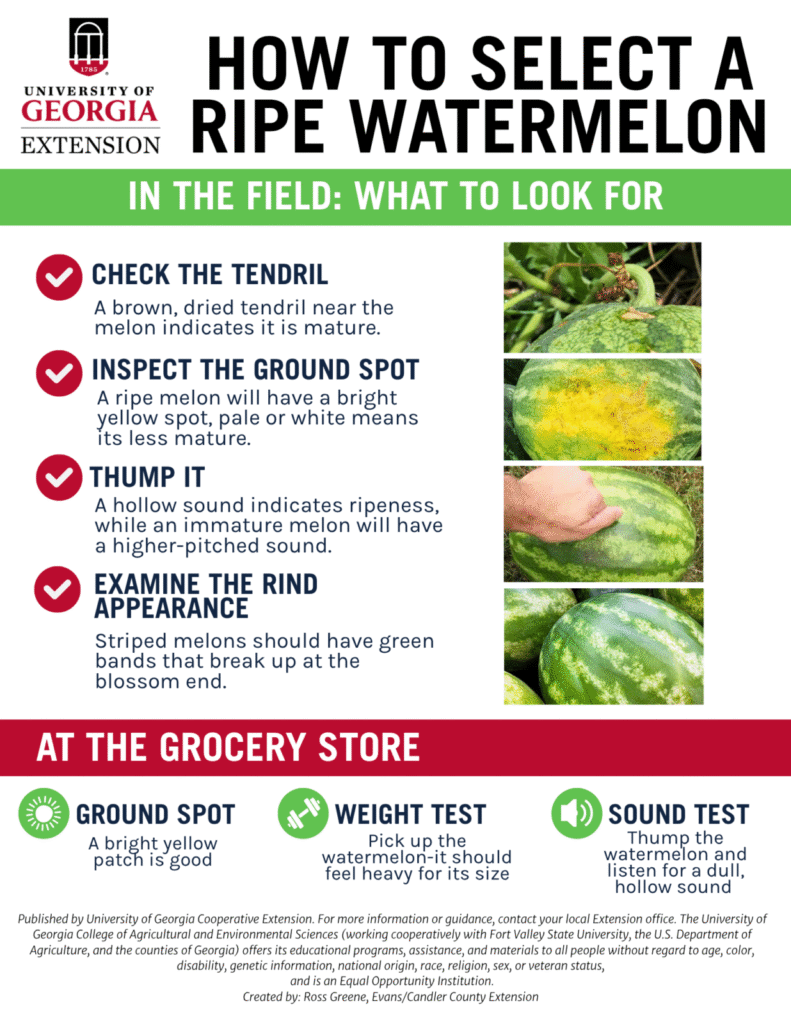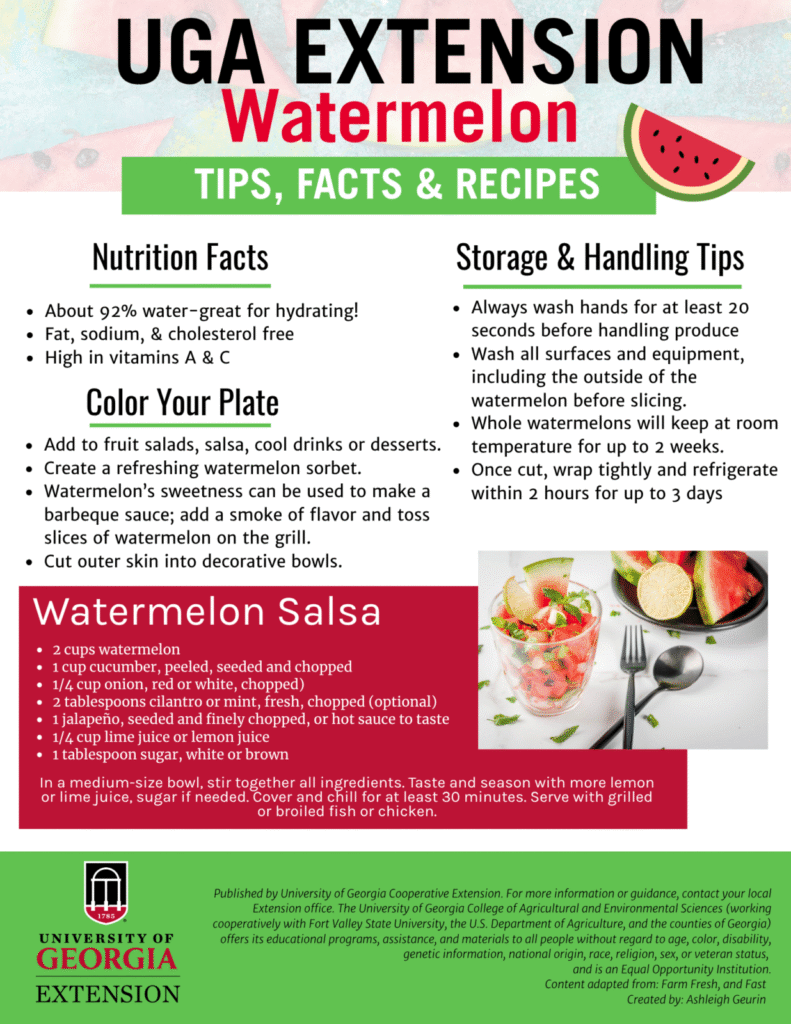
By Ross Greene, UGA Extension ANR Agent and Ashleigh Geurin, UGA Extension FACS Agent – Candler and Evans Counties
As summer rolls into Southeast Georgia, it brings with it one of the most anticipated harvests of the season: watermelons. Whether you’re a backyard gardener, a roadside market shopper, or browsing the produce aisle at the local grocery store, knowing how to pick a ripe, sweet watermelon is a skill worth having.
Picking the Perfect Watermelon
Choosing a good watermelon can be tricky—especially when you can’t see the inside. According to the University of Georgia Extension’s Commercial Watermelon Production guide, the key to quality lies in field maturity. A watermelon won’t get any sweeter after it’s harvested, so it’s important to pick a ripe one the first time.
Commercial growers use tools like hand-held refractometers to check internal sugar levels. If samples from the center of several melons show 10% or more sugar content, the field is typically considered ready for harvest. But if you don’t have a refractometer in your back pocket, don’t worry—there are simple clues you can use:
- Check the tendril: Look for the curly “pigtail” nearest where the melon was attached to the vine. If it’s brown and dried up, that’s a good sign of ripeness.
- Look at the ground spot: The underside of the melon (where it sat on the ground) should be a creamy yellow color. If it’s pale green or white, it’s likely underripe.
- Use the thump test: Tap the melon with your knuckles. A ripe melon gives off a dull, hollow sound, while an unripe one sounds high-pitched or metallic.
- Inspect the rind: For striped varieties like Crimson Sweet, the dark green bands often begin to break up near the blossom end when ripe. On Charleston Gray melons, ripeness may cause ribbed indentations along the rind.
- Feel the weight: A good watermelon should feel heavy for its size, indicating high water content and juiciness.
- Check the finish: Dull skin is a good sign. Shiny melons tend to be underripe.
These tips work just as well at the grocery store—even if you can’t inspect the tendril. Look for the ground spot, use the thump test, and pick a melon that feels heavy and has a dull rind.

Nutritional Benefits of Watermelon
Watermelon isn’t just a refreshing summertime snack—it’s also packed with nutrients and health benefits:
- Rich in lycopene, a phytonutrient linked to reducing blood pressure and supporting heart health.
- A good source of vitamin A (eye health and immune function) and vitamin C (wound healing and immunity).
- Composed of 92% water, making it naturally low in fat, calories, sodium, and cholesterol.
- Contains natural sugars and carbohydrates, so portion control is important for individuals managing blood sugar or carbohydrate intake.
Food Safety Matters
Watermelon is generally safe, but like all produce, it should be handled carefully:
- Wash your hands, the outside of the melon, and cutting surfaces before slicing.
- Use clean knives and cutting boards to avoid cross-contamination.
- Serve freshly cut melon immediately or refrigerate it.
- Never leave cut watermelon out at room temperature for more than two hours—or one hour if the temperature exceeds 90°F.
- When buying pre-cut watermelon, make sure it has been kept on ice or refrigerated.
Whether you’re picking melons from a patch in Metter, Claxton, or buying from a roadside stand on your way to the river, using these simple tips will help ensure your watermelon is crisp, sweet, and safe to enjoy.
For more information on watermelon maturity, nutrition, or food safety, contact:
Candler County Extension Office: 912-685-2408
Evans County Extension Office: 912-739-1292
There are downloadable links below for both fact sheets and a combination sheet that is front and back.